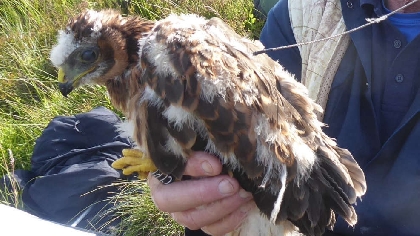
The disappearance of a protected hen harrier in the Yorkshire Dales highlights the need for grouse shooting to be licensed, campaigners say.
The case of female bird Sita, who went missing while wintering on moorland between Reeth and Redmire, has been highlighted as a Yorkshire Dales National Park Authority chief reveals their “embarrassment” at the area’s poor record on raptor persecution.
Sita’s satellite tag stopped transmitting on February 27 this year while the bird was at a roost site. The bird had been fitted with the tag last summer after fledging from her nest in the Forest of Bowland. Despite a police investigation, neither the bird nor the tag have been recovered.
According to the RSPB, when tagged hen harriers die naturally, tags usually continue to transmit, allowing the bird to be recovered and examined.
The charity said that sudden, unexplained transmission loss was an indication that the bird had been illegally killed.
RSPB figures show that between 2015 and 2024, 67 confirmed or suspected raptor persecution incidents were recorded in or near the Yorkshire Dales National Park – including 39 cases of birds of prey being poisoned, trapped or shot.
The charity said 29 tagged hen harriers, including Sita, had also vanished in suspicious circumstances over the same period.
Paul Samuels, co-chair of Hen Harrier Action, which sponsored Sita’s satellite tag through public donations, said: “The Yorkshire Dales National Park is a landscape where hen harriers ought to be thriving. Yet time and time again, headlines are dominated by illegal persecution stories. Sita’s short life and sad end should be a catalyst for change.”
The RSPC claims crimes against hen harriers are linked to land managed for grouse shooting, with the charity calling for a licensing system to be introduced in England for shoots.
Howard Jones, the RSPB’s senior investigations officer, said: “The most effective way to stop the killing of these incredible birds is through licensing grouse shooting in England. The sooner this is introduced, the quicker hen harriers will get the protection they urgently need.”
Speaking at a meeting of the Yorkshire Dales National Park Authority this week, member Mark Corner said the illegal killing of raptors in the park was a “crying shame”. He added: “As the member champion for the natural environment, I’m personally embarrassed that we are the worst spot in the country in terms of the illegal killing of birds.”
A spokesperson for the Yorkshire Dales Moorland Group, which promotes understanding of moorland management, said hen harrier numbers were at a 200-year high across the uplands. They added: “Our keepers have and will always assist the police in searches for missing persons, lost dogs or missing birds. Tag failure is rare but not unheard of. The default accusation that persecution is responsible is regrettable. The conservation work undertaken by moor keepers is commendable as can be seen by the abundance of raptors and other rare species in the Dales.”
Alex Farrell, head of uplands at the British Association for Shooting and Conservation (BASC), said any report of a missing hen harrier was concerning and should be investigated. However, he added: “It is important that caution is exercised before making assumptions or attributing blame. BASC has a clear zero-tolerance stance on the killing of birds of prey and condemns all illegal activity.
“As a committed conservation organisation, we are taking progressive steps with our partners to oversee the continued recovery of hen harriers. Figures released by Natural England today show that collaborative effort resulted in 106 fledged hen harrier chicks in England this year – up from 80 last year.”
A North Yorkshire Police spokesman said: “Our rural taskforce was made aware of Sita’s disappearance and a full investigation was carried out in conjunction with the National Wildlife Crime Unit. Neither Sita nor the tracking tag could be located during this investigation, which explored all available lines of enquiry.”



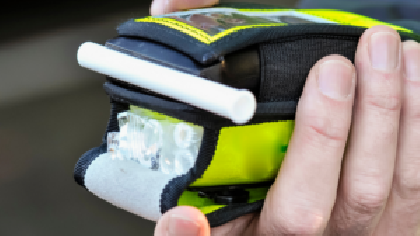 Winter Drink and Drug Drive campaign launched
Winter Drink and Drug Drive campaign launched
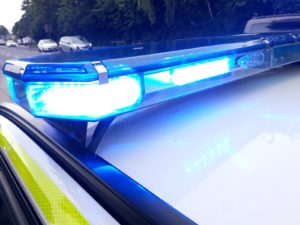 Serious collision in Leyburn
Serious collision in Leyburn
 A nutcracker of a Christmas promised in Dales market town
A nutcracker of a Christmas promised in Dales market town
 Fees to rise at North Yorkshire leisure centres
Fees to rise at North Yorkshire leisure centres
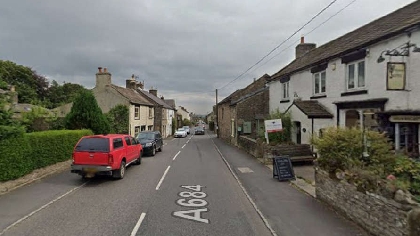 Approval given for driveway despite concerns about impact on village shop
Approval given for driveway despite concerns about impact on village shop
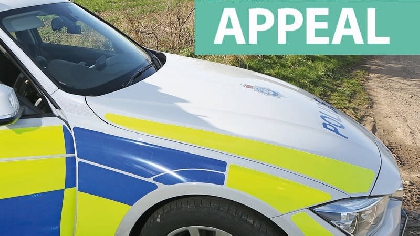 Stranger danger in Settle
Stranger danger in Settle
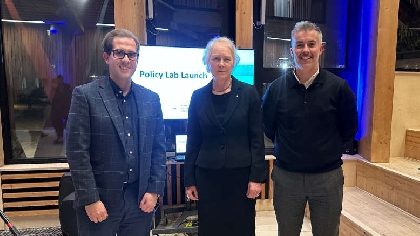 We could be charging visitors to stay in The Dales
We could be charging visitors to stay in The Dales





Comments
Add a comment